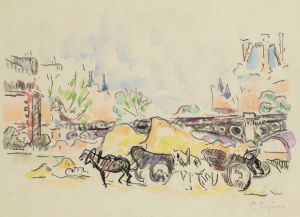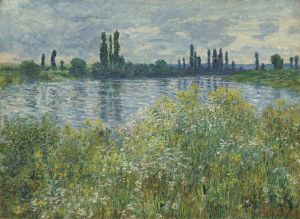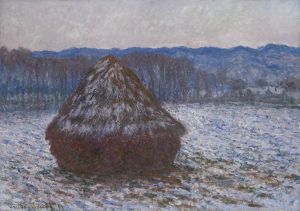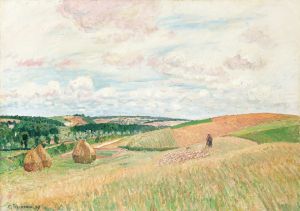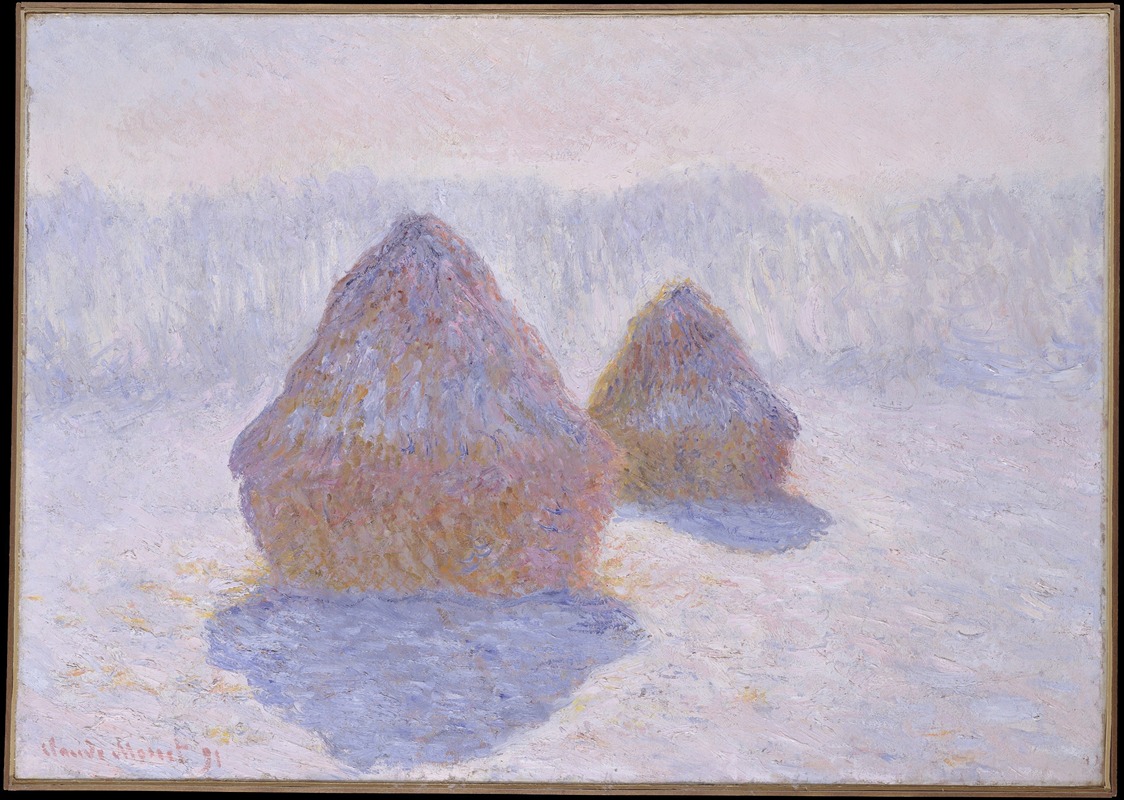
Haystacks
A hand-painted replica of Claude Monet’s masterpiece Haystacks, meticulously crafted by professional artists to capture the true essence of the original. Each piece is created with museum-quality canvas and rare mineral pigments, carefully painted by experienced artists with delicate brushstrokes and rich, layered colors to perfectly recreate the texture of the original artwork. Unlike machine-printed reproductions, this hand-painted version brings the painting to life, infused with the artist’s emotions and skill in every stroke. Whether for personal collection or home decoration, it instantly elevates the artistic atmosphere of any space.
The "Haystacks" series by Claude Monet is a celebrated collection of impressionist paintings created between 1890 and 1891. The series consists of approximately 25 canvases, each depicting stacks of harvested wheat, known as haystacks, in a field near Monet's home in Giverny, France. These works are renowned for their exploration of light, color, and atmosphere, showcasing Monet's dedication to capturing the transient effects of weather, time of day, and seasonal changes.
Monet painted the haystacks over the course of several months, often working outdoors, or "en plein air," to observe the natural variations in light and shadow. The series captures the haystacks in different conditions, including sunrise, sunset, mist, snow, and twilight. Each painting emphasizes the interplay between light and the subject, with Monet using a vibrant palette and loose brushstrokes to convey the fleeting qualities of the scene.
The "Haystacks" series is considered a landmark in the development of impressionism and a precursor to modern art movements that emphasize the subjective perception of the artist. Monet's approach to painting the same subject under varying conditions was groundbreaking at the time and demonstrated his interest in the effects of light and atmosphere on color and form. This method of working in series allowed Monet to study the nuances of natural light and its impact on the landscape, a theme that would continue to dominate his later works.
The paintings were first exhibited in 1891 and received critical acclaim for their innovative approach and technical mastery. Today, individual works from the "Haystacks" series are housed in major museums and private collections around the world, including the Musée d'Orsay in Paris, the Art Institute of Chicago, and the Metropolitan Museum of Art in New York. The series remains one of Monet's most iconic achievements and a defining example of impressionist art.
Monet's "Haystacks" series not only reflects his artistic vision but also his deep connection to the rural landscape of Giverny, where he lived and worked for much of his life. The haystacks themselves were a common sight in the French countryside, symbolizing agricultural life and the passage of time. Through his paintings, Monet transformed this humble subject into a profound exploration of light, color, and perception, leaving a lasting legacy in the history of art.





